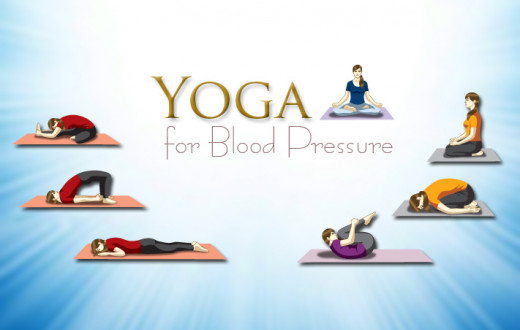By Nikita Singh | Posted: January 16, 2019
When it comes to workplace well-being, often people link it to work-life balance. Work-life balance seems to be the new buzz word, the desire people have as they strive to create whole lives for themselves.
Recent experiences at the workplace – be them mine, or some client’s or leader’s, tell me that the idea of employees striking a delicate balance between work and personal life seems to be fading away. I’ve been wondering why this is so.
Is it that it’s no longer possible to distinguish between work and personal life? Is the line between the two blurring to insignificance? With the rise of flexible schedules, constant contact via technology, and remote work, the new mantra seems to be work-life integration, not work-life balance.
A lot of people, myself included, are all right with going beyond the 6-8 hour work day. In fact, in today’s competitive business environment, we often have certain days where we work extra hours. However, perhaps what some people are looking for is an answer to the question of how to ensure they live a whole life, without compromising fast career advancement
So, what does it take to really live life with a healthy work-life integration?
1. Work-life integration is a mindset.
Yes, it all begins with our mindset. While flexibility at work is on the rise, so is the relentless pace of business. In fact, studies show that over 40% of the workforce faces significant stress in their jobs, and describe the feeling as overwhelming. For those who seek to live a whole life, however, it becomes imperative that they opt for a no-compromise mindset, whether in work or life.
Work-life integration involves developing broad vision for oneself and one’s life. It may involve either re-working our identity or recognizing the many possible aspects of our self. Having achieved great success in our careers, often the desire to express the unexpressed facets of ourselves becomes pressing. Therefore, the first step is really to shake up our mindset about what success means. Is success high achievement at work only, or is it the ability to integrate various aspects of life while continuing to work intensely?
This switch in mindset, along with a vision for one’s life, may require us to then define the various priorities we have in addition to work. For example, while I’ve always worked, and continue to work for a considerable number of hours per week, I have now set for myself some non-negotiables: fitness/exercise, volunteering (at least once a week), and my daily yoga practice.
2. Striving for work-life integration equals excellent energy management.
Why do I say this? Because, work-life integration involves the ability to look at both the short-term and long-term simultaneously. For example, when I need to slow down I tell myself, “In the short-term, I could be chasing a tough deadline, but if every deadline made me compromise on life, the long-term may not look too bright.”
Juggling multiple, diverse areas of your life without falling prey to multitasking requires the ability to be mindful in the present moment. At the same time, you can’t let go of priorities for the future, whether it’s one hour, one month, or even six months later.
This requires tremendous energy management, discipline, self-control, self-compassion, and cultivating mindfulness in one’s life. Personally I receive this energy from my daily practice of yoga and meditation, coupled with my excel sheet that has goals for each dimension of my life, broken down by fortnight, and updated every 3 months. This excel sheet planning, along with the energy from yoga/mindfulness, makes it easier to execute my goals.
3. Work-life integration requires action and motivation.
Even though we said work-life integration is a mind-set, taking action is imperative!
A lot of people envision and dream of pursuing their career while also keeping up with their physical fitness, spiritual practices, and social life, but only a few really manage to do this. The only things that differentiate the successful few from everyone else are intrinsic motivation and action. Too much reflection, self-assessment, and planning sometimes make for analysis-paralysis.
According to Herminia Ibarra, Organizational Behavior professor at INSEAD, taking action makes people find their way more quickly than the usual paper and pencil self-assessment. Of course, this doesn’t mean planning doesn’t work. All I am saying is that sometimes there is no perfect way to manage time and do what you have to. Often, procrastination, or a tendency to get caught up in short-term goals, or our super conscientious and low resilience behavior at work, may get in the way. In such situations, pushing yourself to show up and act can be most useful.
When I worked long hours in a consulting role, it was really just the vision for a whole life along with the ability to take action that led me to do anything else outside of the job.
I found that extending focus and value to the rest of my life, in addition to achievement at work, was a great way to begin to take action.
In the consulting role, I always felt that given a situation where I was on my own, work-life integration would be easier. However, now that I am deep in my private venture to coach individuals and consult with organizations, I have realized that achieving a balance can be just as challenging in a situation where I set my own deadlines. As they say, the grass is always greener on the other side.
There are no shortcuts. The only way to succeed in creating a whole life for ourselves is to develop the intrinsic motivation, and then act.
Finally, as Dr. Herminia Ibarra says, “when we act like a leader, we also begin to think like a leader.” So, when we act on effective work-life integration, it also becomes a reality for us!
This article was originally published on LinkedIn and is re-posted here with the author’s permission.
Nikita Singh, an organizational psychologist, a certified health & wellness coach and a leadership consultant, and the founder of The Human Prism, has worked internationally in diverse industries with a keen interest in holistic, individual development.





















